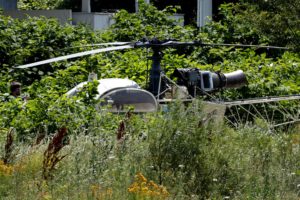An aerial video shows the harrowing destruction of Balaroa housing complex in Palu, the capital of Indonesia’s Central Sulawesi, where soil liquefaction destroyed and buried hundreds of houses after a powerful earthquake and tsunami struck the city.
Pantauan udara kondisi Komplek Perumnas Balaroa yang hancur akibat ambles 3 meter dan terangkat 2 meter saat gempa 7,4 SR di Kota Palu. Diperkirakan qda 1.747 rumah yang rusak. Komplek Perumnas Balaroa ini tepat di atas Sesar Palu Koro. Banyak korban yang tertimbun disini. pic.twitter.com/6Xyd0DOVDV
— Sutopo Purwo Nugroho (@Sutopo_PN) October 2, 2018
An estimated 1,747 houses were destroyed in Balaroa, with some sinking 10 to 20 feet underground, according to the National Disaster Management Agency (BNPB).
“We still don’t know how many people are buried in Balaroa, and also in Petobo,” said BNPB spokesman Sutopo Purwo Nugroho, referring to another area where liquefaction also occurred, “because the evacuations are difficult.” He estimated 744 houses were destroyed in Petobo.
Soil liquefaction is a phenomenon during which loose or wet soil acts like a fluid due to intense pressure during an earthquake. Indonesian officials said soil liquefaction destroyed homes in the Balaroa, Sigi and Parigi Moutong areas.
By Oct. 2, a total of 1,234 people were confirmed to have died, while 799 others were severely injured, Sutopo said, adding that the death toll is expected to rise. JB
RELATED STORIES:
Indonesia tsunami worsened by shape of Palu bay — scientists
384 dead in Indonesia tsunami, quake; residents camp outside
